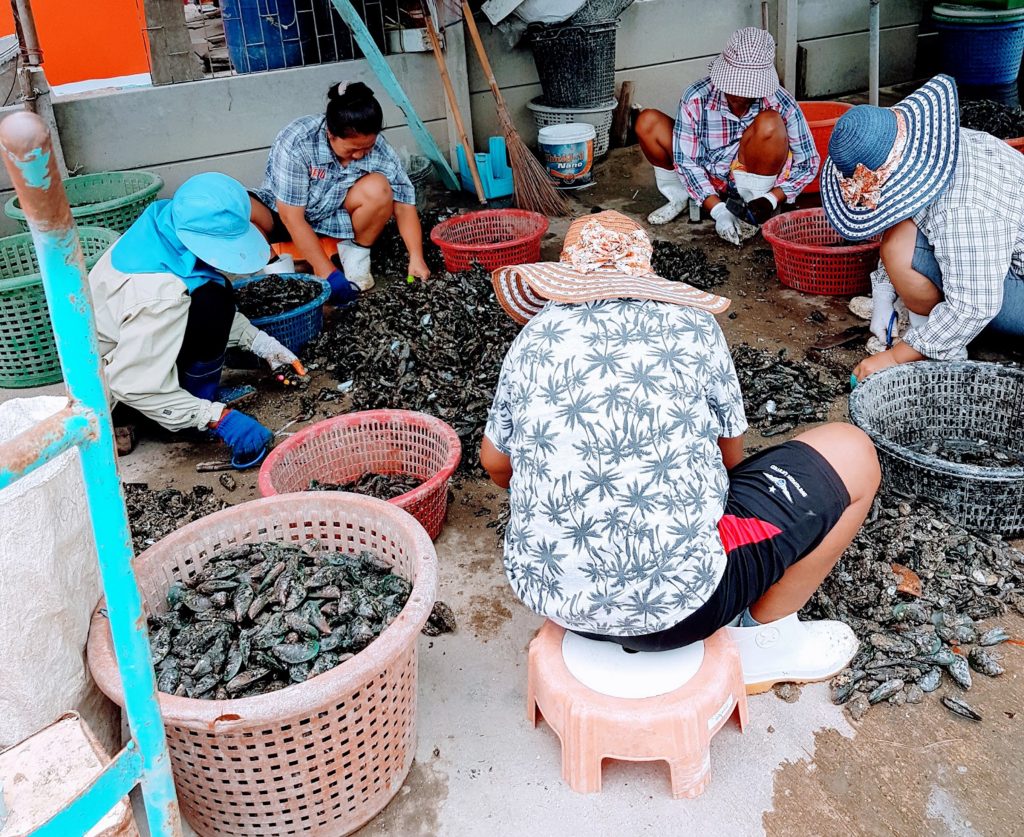WIF/ FISHING COMMUNITIES
Engendering business
A business case for applying a gender lens in fisheries businesses
By Caterina Meloni (caterina@connectingfounders.com), Founder, Connecting Founders, Bangkok, Thailand
In a business sense, fisheries and aquaculture are slotted in the category of food and beverage manufacturing. As in any other sector, investor demand and regulatory pressure are driving the growing push towards advancing gender diversity and inclusion and integrating it in companies’ business models. This is because gender is critical to investments and their long-term prospects. It’s about reducing risks over the life of the investment and opening up new opportunities to create value. Gender lens investing – which invests into women-owned businesses or businesses which focus on bringing benefits to women as consumers, employees or suppliers – is growing globally and in the region. Since 2017, the number of global funds with a gender lens has registered a 250 per cent growth, with a total of USD 6 billion worth of assets under management. Broadly, some investors are attracted by the positive link between gender and financial performance while others focus on generating gender impact along their specific priority areas.

The COVID-19 pandemic has put a spotlight on social and gender risks and exacerbated gender gaps. Out of the 62 million workers who lost their jobs in the Southeast Asia and Pacific region in 2020, many were women who had to leave the workforce to meet increased family responsibilities. As the economies re-open, these are critical factors that businesses need to consider.
Diversity is viewed as important not only in attracting, retaining and growing an innovative and committed workforce but also in decision making roles in supervision, management and governance. It makes a business more resilient, better able to weather crises, and more importantly, better able to leverage new opportunities and meet the needs of a diverse customer base. For those companies that work closely with the community, there is no true ‘social license to operate’ without women. Failure to consult women or provide robust health and safety guidelines for female employees and the community, including zero tolerance policies to prevent violence and harassment, can quickly compromise a company’s reputation and their ability to effectively work in a certain place.
While the ‘why’ of diversity and inclusion is increasingly recognised, many ASEAN businesses find themselves now grappling with the ‘how’ to go about it – for example, how to build an internal pipeline of high-performing women to strengthen their leadership, how to support women in the workplace in a cost-effective and practical way that does not compromise overall performance, how to engage more women owned businesses in their supply chains. Globally, less than one per cent of procurement from large companies is from women owned businesses.

Connecting Founders takes a pragmatic approach in guiding businesses to advance diversity and inclusion based on their specific needs and goals, and at their own pace. A key aspect is breaking down complex issues to make them more accessible and practical for busy business owners and executives, supporting them step by step, and adjusting to course-correct if needed. This includes gap analyses to provide recommendations for action; designing gender and inclusion policies, accompanied by practical strategies and plans that set targets, budgets, timelines and responsibilities; and tracking and monitoring the outcomes.
The International Finance Corporation has published an insightful case study of its work advising SolTuna, a tuna manufacturing company in the Solomon Islands, on how to better support its female employees. In 2017, the company introduced gender-smart workplace measures to help overcome employee retention and inconsistent work attendance among the 1,800 staff, 65 per cent of whom were women. As well as supporting women to rise into management roles, one focus of the work was to create better career opportunities by improving women’s access to non-traditional jobs, such as those of forklift drivers and mechanics. As part of the absenteeism problem was due to women’s financial and personal difficulties, the measures also included improving women’s financial literacy, household budget management and life-planning skills. Gender based violence involving employees was addressed through training and by providing access to a safe house. The training contributed to significant improvements in financial attitudes and behaviour, increase in staff attendance at work and better financial outcomes for the business through increased productivity.
Businesses that are committed to strengthening gender diversity and inclusion should set ambitious but realistic goals. They need to be aware that advancing gender equality in the workplace or supporting diversity in their supply chain is not a linear process. It is a journey that will likely take longer than anticipated and might require tweaking and recalibration as the company learns from it. Tracking and monitoring progress with robust data is thus an essential component of any diversity strategy.
Businesses that are committed to strengthening gender diversity and inclusion should set ambitious but realistic goals